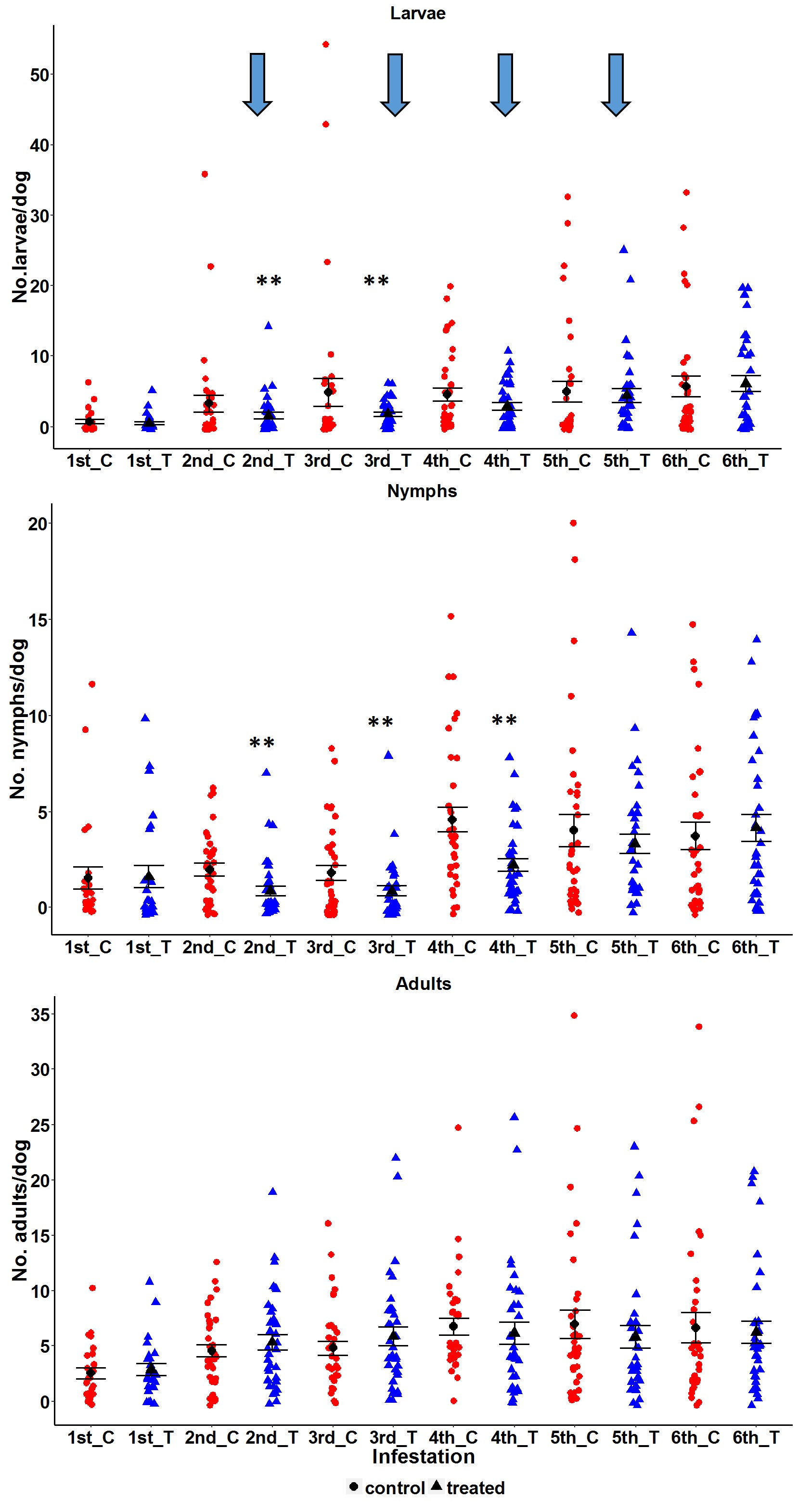Abstract
Beagles are less susceptible to Rhipicephalus sanguineus sensu lato tick due to the production of the allomones benzaldehyde and 2-hexanone. Our previous published work showed that these compounds can reduce tick burden on susceptible dogs. Here we tested the hypothesis that an increase in repellent dose and release rate could increase repellent efficacy and persistence. Slow-release formulations of these compounds, with higher doses and release rates, were tested on artificially-infested dogs. Ten dogs were randomly assigned to two groups with five dogs each. The treated group received collars with slow-release formulations of the compounds attached, while the control group received collars with clean formulations attached. Five environmental infestations were performed, with the number of ticks (at all stages) on the dogs being counted once a day for 40 days. No significant increase in repellent efficacy was observed with the higher doses and release rates, whereas a greater persistence in repellent activity was observed. Treatment with the formulations resulted in a two-to-three-fold reduction in the number of immature stage ticks for up to three weeks. However, the number of adults was similar in both groups. Loss of repellent activity after the third week of testing coincided with a marked change in the relative release rates for the two compounds. It is hypothesized that relative amounts, rather than absolute amounts, of repellent release from slow-release formulations are important for repellent activity. We also hypothesize that the avoidance of less-preferred hosts by ticks relies on olfactory-mediated perception of specific blends of volatile cues from less preferred hosts.
Keywords:
Benzaldehyde; 2-Hexanone; slow release formulation; tick control

 Thumbnail
Thumbnail
 Thumbnail
Thumbnail

